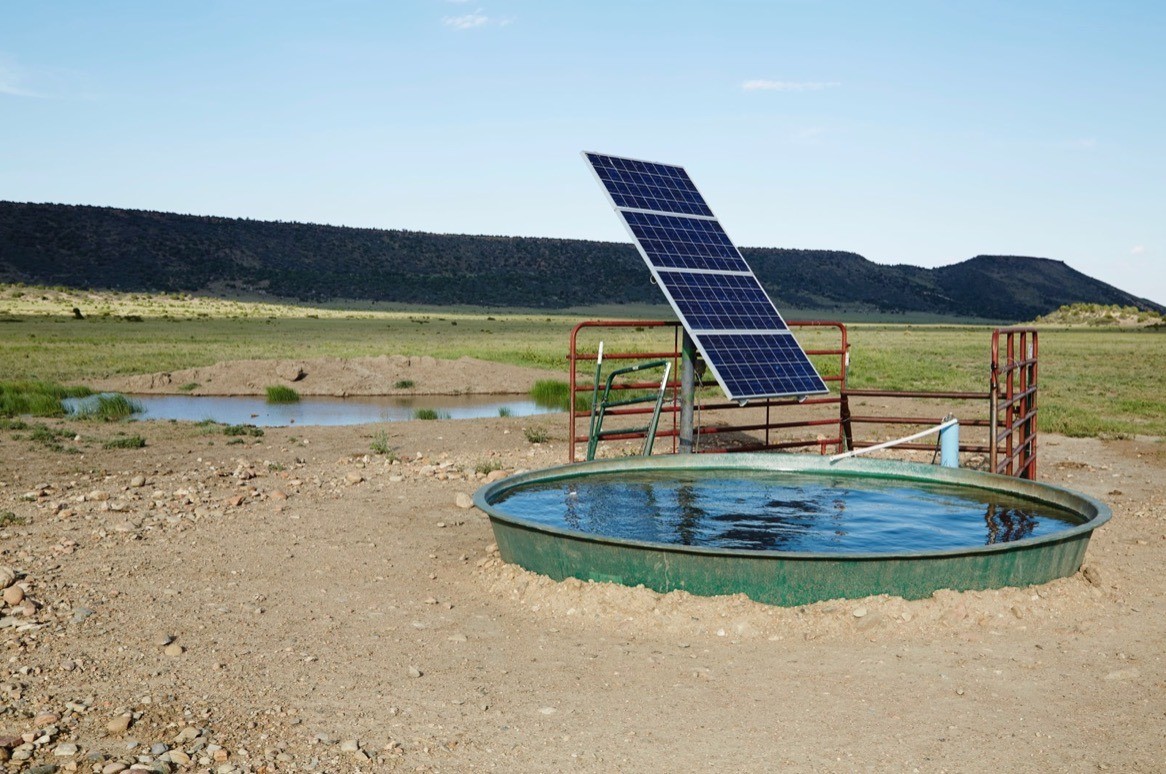Featured in Land Investor Magazine Volume 5
In Texas, unless you’re lucky enough to have a water well that artesian flows to the surface without any pumping or lifting, there’s a good chance you are using a windmill or electrical submersible pump system. If you haven’t made the switch yet, it may be time to consider solar power as an alternative source of energy for your water wells.
Of course, water wells provide water to service your household or ranch home, livestock, wildlife, and irrigation needs where city or community service cannot. Because they don’t require expensive electrical lines, solar-powered wells allow you to irrigate, water your livestock, or keep your ponds full in the more remote areas of your ranch.
For others, they can provide what is needed to utilize your own water source to live truly off the grid.
There are many benefits to using solar panels to power your water wells:
- More efficient and cost less to run than typical electrical pumps
- Equipment is more powerful than before
- Less expensive to install without needing to install overhead powerlines to service the pump
- They provide water in remote areas
- Longer lasting parts, many last 20 years and are warrantied
- Systems can be upgraded without replacements
- Some systems can be shipped to your door for do-it-yourself installation- if you already have the well
- An AC/DC inverter can be installed with a generator for cloudy days
Several factors have to be considered when selecting which solar power pump system to use, such as water requirements and pumping volume needs, daily water use, and storage tank size. Each water well is different, with different depths and capacities, so each situation is different. Many ranchers should work with experts and water well drillers in their area to determine these needs in order to design the ideal system and solution properly. And the USDA and NRCS have a cost-share program to help with the costs of installing a solar pumping system for livestock, so they can also be a great resource when designing the system.
As far as the legality of accessing and drilling for water in Texas, landowners should consult with us, their local water board, the Texas Commission on Environmental Quality, or a water well driller. The water is either surface water belonging to the state, or it is groundwater, which belongs to the surface landowner under the rule of capture. But just because it may belong to the landowner doesn’t mean that one can drill a well without a permit. Much of the state is regulated by roughly 100 different Groundwater Conservation Districts, so landowners need to make sure they know if they are within one of these areas before they drill.
There is also a perceived value-add for having solar-powered water wells on your ranch. One of the items we discuss with landowners before going to market is the condition of water sources and wells and related pumps. Seeing solar panels on a ranch is a good thing. They are relatively newer equipment and their presence often indicates that the landowner is operating with the cutting edge of new ranch water well technology. It also signals that the wells have been serviced in “recent” years versus the unknown age and condition of those older sucker rods laying around. So if you’re in need of windmill or pump repairs on your water well, here’s just another reason to consider going solar at this time.
